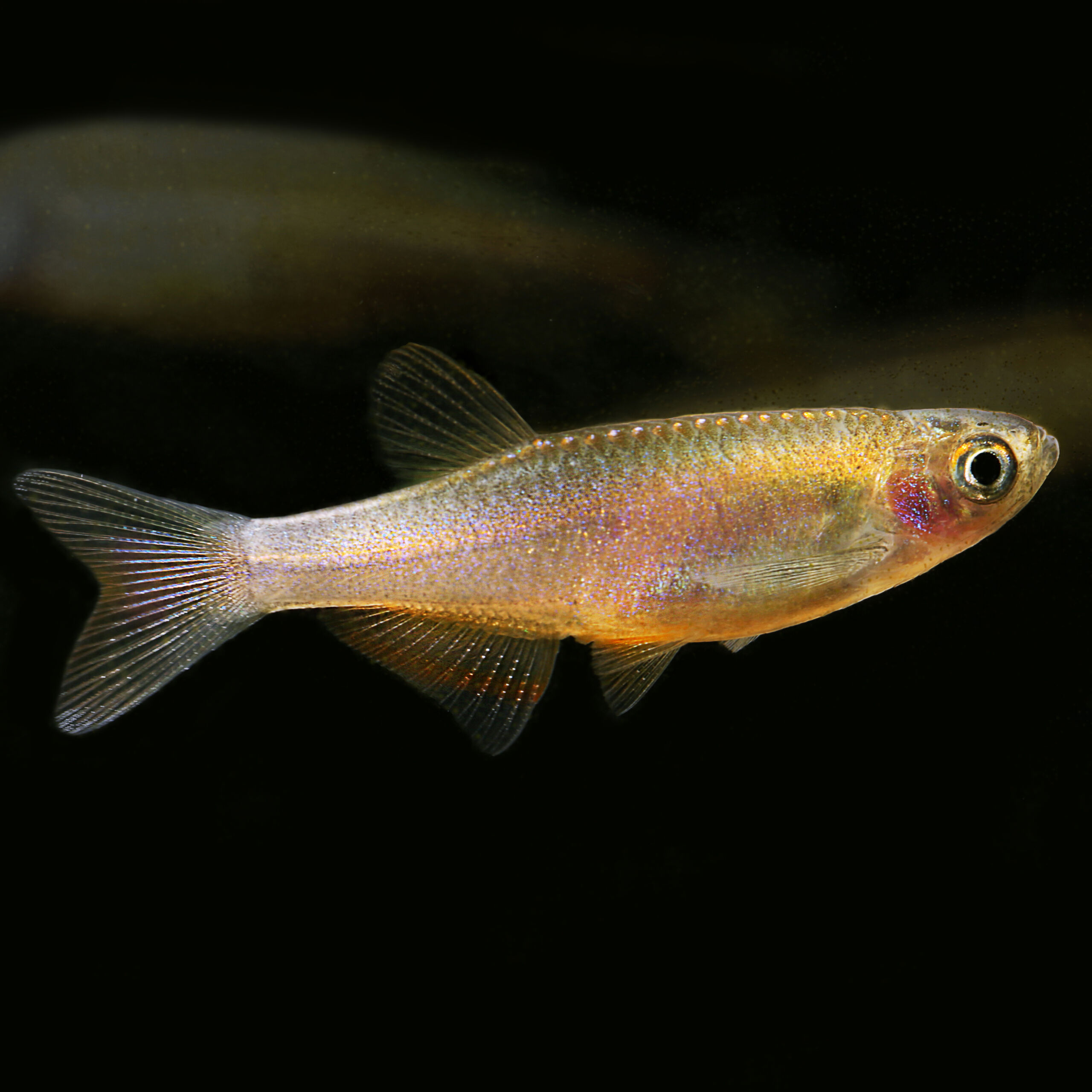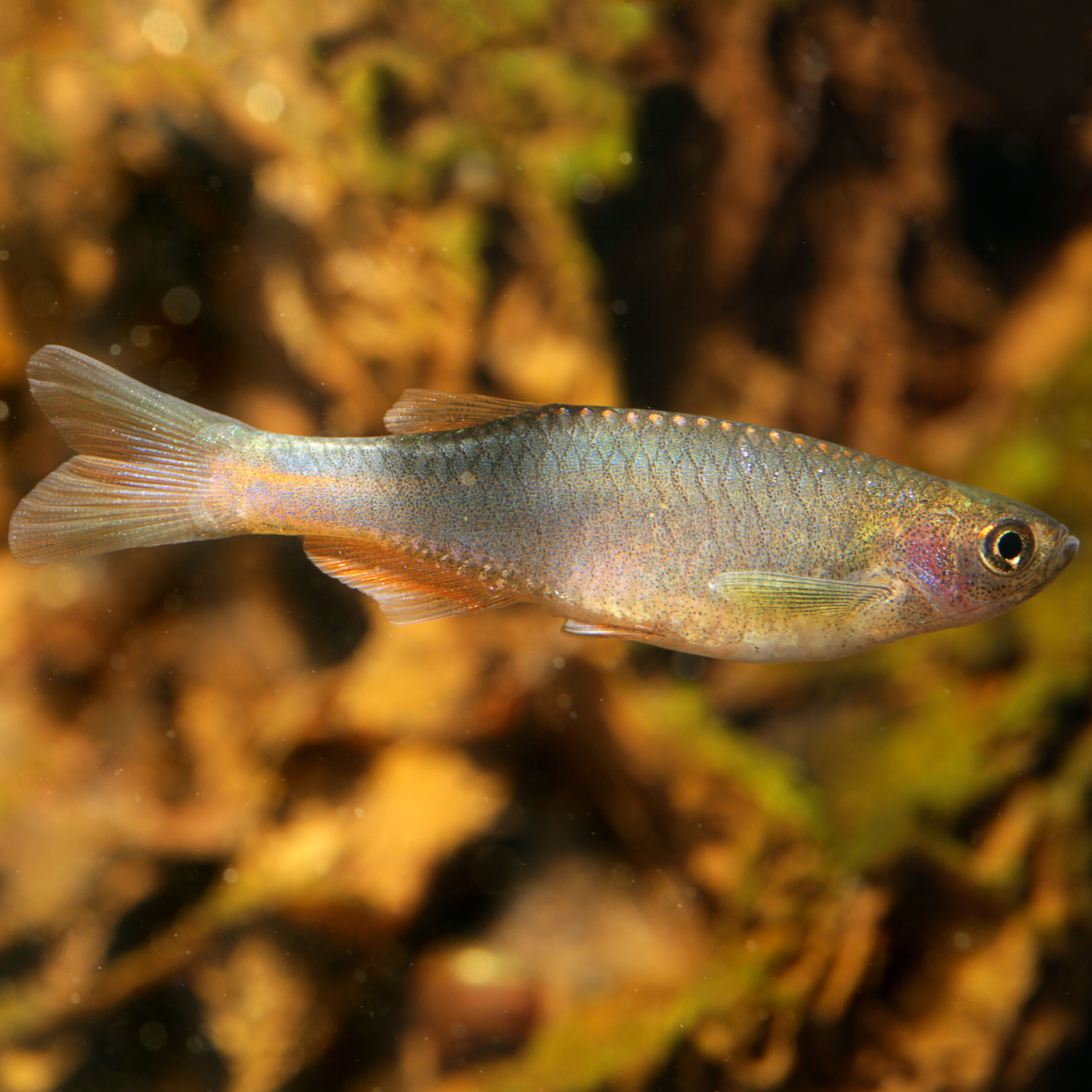Rose Danio
Danio roseus
The shimmering colors of the Rose Danio make it a real feast for the eyes in the aquarium.
- schooling fish that likes to swim
- beautiful play of colors
- shimmering pink to gold
1 in stock
 Delivery in a few working days
Delivery in a few working days
 Free shipping from €60 across Austria
Free shipping from €60 across Austria





Important data
Product description & details
The Rose Danio, also known as Rosy Danio or Purple Passion Danio, is a beautifully colored, peaceful danio from Southeast Asia. Its natural distribution area extends from the northern part of the Mekong through Thailand, Laos and Myanmar and its natural habitat are mainly fast-flowing, oxygen-rich and relatively cool rainforest rivers and streams. This pretty fish shows, depending on the animal and the incidence of light, bluish, pink and orange-gold shimmering scales on a gray-silvery base color.
Care in the aquarium
The Rose Danio, which can grow up to 5 cm in size, can be classified as easy to keep. As a somewhat timid fish, it wants to be kept in a group of at least 10 animals and requires dense background and edge vegetation to feel comfortable and safe. However, care should be taken to ensure that the lively danio has enough swimming space. An edge length of 80 cm is therefore the minimum. In the community tank it can be kept very well together with peaceful fish of approximately the same size, such as dwarf cory catfish or dwarf gourami.
Feeding
In nature, the Rose Danio feeds primarily on small insects and their larvae as well as small aquatic creatures. The primarily carnivorous (meat-eating) danio is particularly happy in the aquarium with live and frozen food types such as artemia, daphnia or enchytraea, but fish food suitable for tetras and rasboras is also readily accepted.
Sexual characteristics and breeding
Female Rose Danios have a slightly rounder body stature and are a little paler than the males. Soft water is ideal for breeding this beautiful danio. The willingness to spawn can be increased by giving more live food. Once a suitable spawning site has been found in the form of fine-feathered plants or moss cushions, the females lay the eggs between them, where they are fertilized by the male. As is typical for open spawners, no brood care is subsequently carried out. The fish larvae hatch from the eggs after about 2-3 days and swim freely after about 3-4 more days. The initially very small larvae can be fed with dust food and infusoria and a little later also with newly hatched Artemia nauplii. Since Rose Danios are spawning predators, it is best to separate the parents from the future offspring immediately after laying their eggs.






